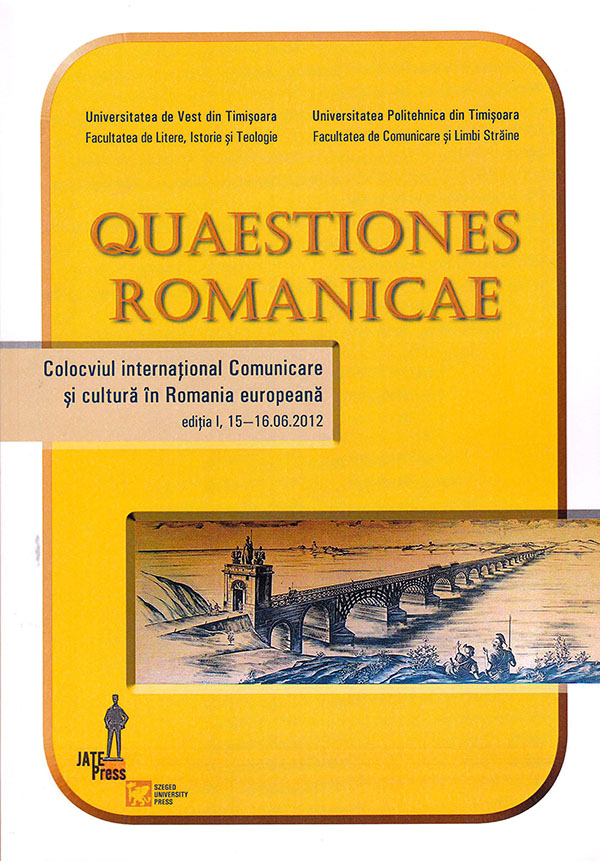Ştefan Aug. Doinaş – o perspectivă modernă asupra conceptului de mimesis
Abstract: Ever since the beginnings of literature, the relationship between reality and the literary work has been a subject of discussion, either implicitly or explicitly. Nowadays, literary works relate not only to the world we live in, but also to the works of the forerunners and their own way of representing the world. Consequently, the problem of imitation has to be regarded from two different angles: on the one hand, as a relationship between the literary work and the environment (nature, society), on the other hand in relation with the literary works of previous writers. I have attempted to read both the poetics of Antiquity and the ones of modern times (especially Ştefan Aug. Doinaş’s poetics) as a dialogue of cultures belonging to different places and times, in order to find those classical notes within modern poetics which can prove that the classical spirit is a pattern that periodically moulds the cultural life of humanity. My conclusion is that the path fromAntiquity to Modernity seems to be a two way one, so that indeed, as has been stated, modern writers may be regarded as precursors of the classics. Ştefan Aug. Doinaş’s literary aesthetic doctrine, which, despite its extremely modern form, has seldom been discussed by Romanian literary critics, can also be seen as a proof that the classical spirit is cyclically reborn in culture. The idea was promoted by the Literary Circle in Sibiu, a group of which the author was a member, and which significantly contributed to shaping Romanian culture during the period between the two World Wars.
Keywords: Antiquity, Modernity, imitation, mimesis, doctrine, Ştefan Aug. Doinaş, poetics, aesthetics.
Rezumat: Raportul dintre realitate și opera literară s-a pus – implicit sau explicit – de la începuturile literaturii și continuă să se pună și astăzi; raportarea nu se mai face, însă, doar la lumea în care trăim, ci și la operele înai ntașilor, în care aceasta a fost transpusă într-un anumit fel, încât problema imitației trebuie privită din două unghiuri: pe de o parte, ca raport între operă și realitatea înconjurătoare (natură, societate), pe de altă parte, ca relație cu operele predec esorilor. Ne-am propus să citim poeticile Antichității și pe cele moderne (în special poetica lui Ștefan Aug. Doinaș) ca pe un dialog între culturi aparținând unor spații și timpuri diferite, spre a găsi acele note clasice în poeticile moderne, probă că spiritul clasic este un tipar care modelează viața culturală a omenirii periodic. Concluzia noastră este că drumul dintre Antichitate și modernitate pare a fi unul cu două sensuri, astfel încât, pe bună dreptate, s-a afirmat că modernii pot fi priviți ca precursori ai clasicilor. Doctrina estetico-literară a lui Doinaș, despre care s-a scris putin în critica românească, în ciuda formei sale foarte moderne, poate fi privită și ca o dovadă că spiritul clasic renaște periodic în cultură, idee promovată și de către Cercul Literar de la Sibiu, din care a făcut parte autorul , grupare care a imprimat o direcție importantă culturii române din perioada interbelică.
Cuvinte-cheie: Antichitate, modernitate, imitație, mimesis, doctrină, Ștefan Aug. Doinaș, poetică, est etica.
